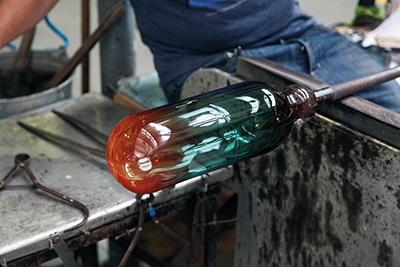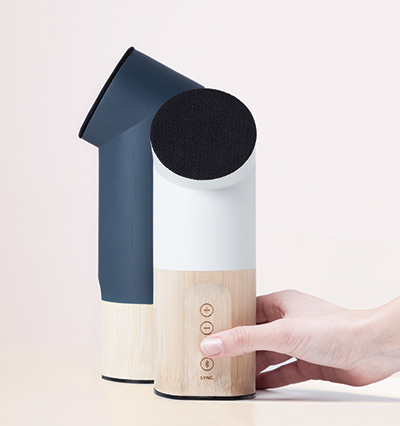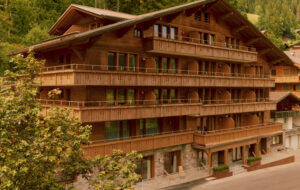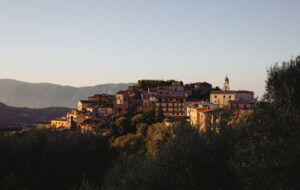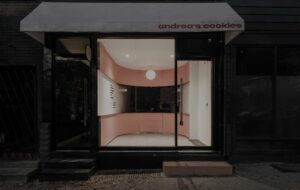|
|
||
|
The young French designer is making a name for himself as a master of unlikely material combinations Samy Rio might have only graduated from L’École nationale supérieure de création industrielle (ENSCI) in 2014, but he’s already making his mark on the French design scene. ‘I initially studied wood-working,’ he says, ‘but I realised quite early on that if I wanted to work on many projects, and use different materials and techniques, I would need to study industrial design.’ Rio’s thinking is perfectly demonstrated by his graduation project, Bambou, which won the Grand Prix at Villa Noailles’s Design Parade 2015, thrusting him into the spotlight. The collection used CNC-milled bamboo tubes as building blocks for contemporary consumer products such as a hairdryer and speakers. And while the design does tick all the boxes – using natural materials with a nod to sustainability, modularity, a combination of high and low technology, craft and industrial production – Rio successfully synthesised all these disparate elements into a highly convincing, workable statement. Following this early success, Rio took up a slew of residencies. The first two, as part of his award, included a year-long research position at Paris museum Sèvres – Cité de la céramique, and a role at CIRVA, the international glass and arts research centre. The third residency offer came spontaneously from Taiwan, where the young Frenchman spent a month among traditional bamboo craftsmen. ‘During this time I designed a lantern using a bamboo tube and weaving, which is different on each individual product and reflects the variety of weaving techniques developed over the centuries,’ Rio says. If all goes well, the lantern should go into production at some point in 2017.
Vases Composés present a considered collage of materials and techniques
In his work, Rio focuses on traditional craft, as well as novel combinations His latest design is something different again. His Vases Composés, a series of colourful, hand-blown vases adorned with ceramic and wooden elements, are the result of the earlier ceramics and glass residencies. ‘I discovered that the two materials are very different, but in the end there is a lot of similarity in the shapes the craftsmen achieve,’ Rio observes. ‘That’s where the idea of mixing glass and ceramic came from – the specialists are masters of their own technique, but they also need to know how to share their knowledge to create something new and valuable. In the end, the designer becomes an interface between them, allowing this to happen.’ The vases themselves are endearing: rotund without being overbearing, meticulously crafted without being fussy, and slightly awkward in their composition without being jarring. No stretch of imagination is required when Rio names Italian architect and designer Carlo Scarpa, the master of detail and material connection, as an important influence. More than finished vessels, the vases appear to be – like other successful releases by young European designers – products of an iterative and investigative process into typologies and forms. Rio confirms this: ‘I always focused more on the technique, the production methods and the understanding of the tools and the machines that transform a material into an object. If I can’t understand how things are made, I can’t just start designing an object from nothing.’ Instead, the inspiration is found in investigating the production, but not to the point where it becomes second nature, as this can put limits on creativity and originality. ‘I guess it is a constant balance between being a bit clueless and being in the know,’ Rio concludes.
Bamboo lantern designed as part of Rio’s Taiwan residency
Rio combines natural materials and electric components in Bambou speakers However, he still keeps returning to bamboo: he’s working on a new project using the material at the moment, though he ‘can’t say much, yet’. Unexpectedly, his interest in bamboo has taken him back to his roots. ‘There’s a gigantic botanical garden near where I grew up in the south of France, with many different species of the plant,’ he recalls. ‘It’s unique in Europe and I source all the bamboo for my practice there.’ He intends to produce his designs in France, despite the limited tradition of bamboo craftsmanship in his native land. He stresses that he aims to use the material in its natural form, rather than as part of a composite material – as it’s often used in flooring nowadays. He is hoping that this initiative could prove a ‘game changer for crafts and industries’ on the continent. Rio clearly enjoys experimenting with different media: other projects in the pipeline include one that is ‘made from granite’ and a rug – ‘again a different material’. But he does his best to tread the line between being a generalist and a specialist, so far with great success. We’ll be awaiting his next move. |
Words Peter Smisek
Portrait Mario Simon |
|
|
||



